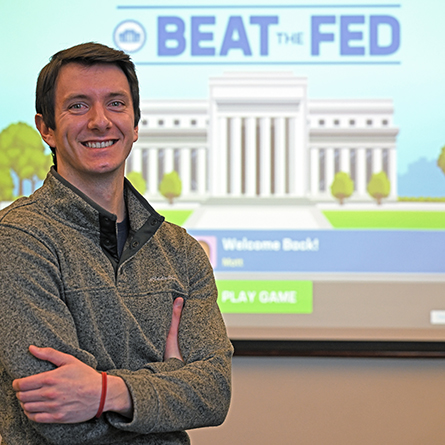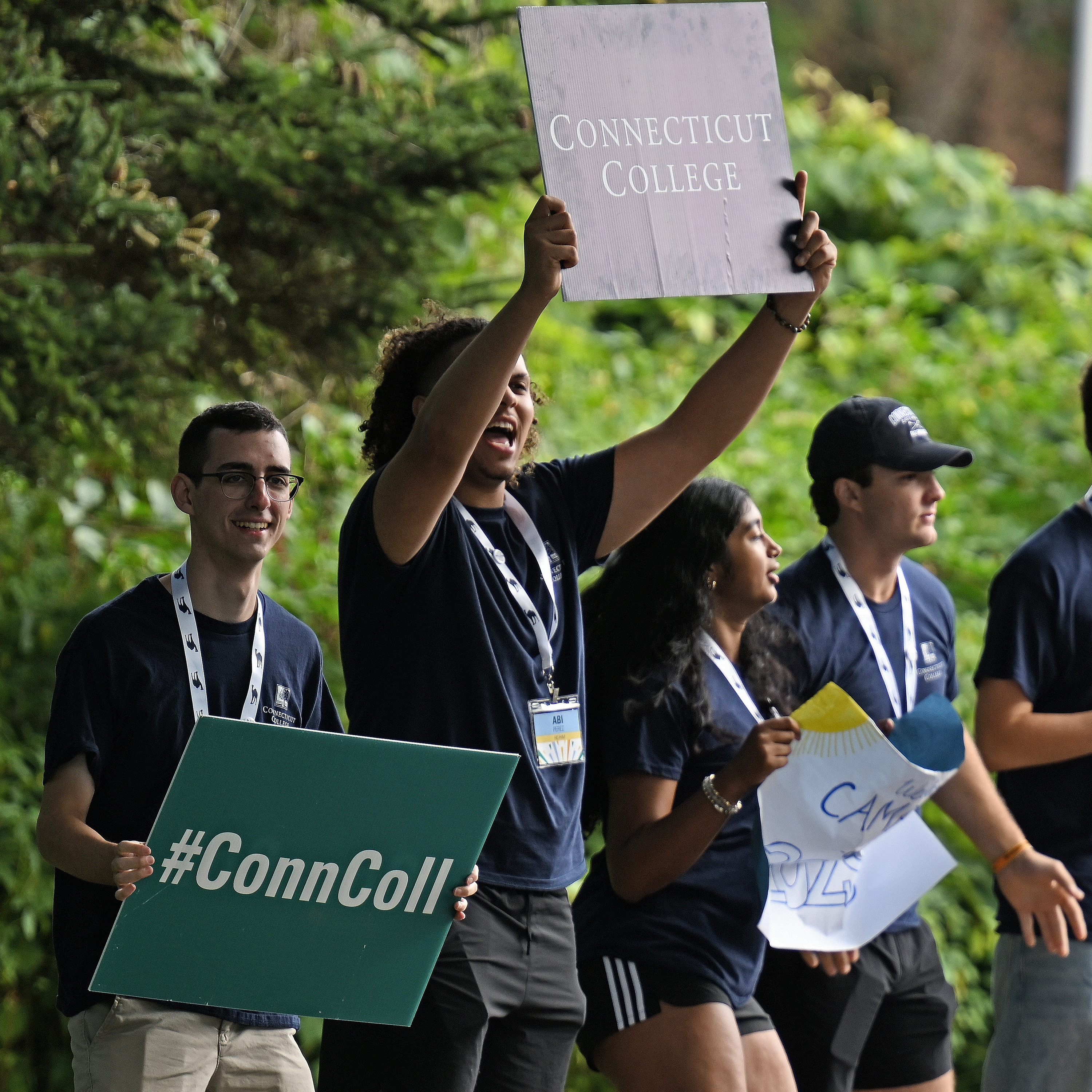
Beat the Fed: Matt Sambor ’22 is making macroeconomics fun

It’s barely 9 a.m. in a third-floor Fanning Hall classroom overlooking a moody Tempel Green in January, and Matthew Sambor ’22 has just put eight first- and second-year Conn students in charge of the U.S. economy.
It’s up to them to manage unemployment and inflation. They’ll need to apply monetary and fiscal policies and assess their impact. Along the way, they’ll be peppered with requests from lobbying groups and special interests.
“You have to decide who to make happy and who to decline,” Sambor explains to the students. He then adds a word of warning: “If you let unemployment get too high or inflation get too high, you’ll get fired as the head of the Federal Reserve.”
Luckily for the students in Hale Center Career Adviser Cheryl Banker’s “Finance Career Preparation” class, their tenure as “head of the fed” only lasts four weeks and their policy decisions won’t impact much beyond the leaderboard for “Beat the Fed,” an innovative macroeconomics computer game Sambor is rolling out to high schools, colleges and major corporations.
For the generation of readers who grew up playing “Oregon Trail,” the general idea will feel familiar. Except instead of learning how to avoid dying of dysentery or the best strategies for forging a river, “Beat the Fed” players learn about finance and macroeconomics as they make real-world choices at different periods in U.S. history to see how their performance compares to historical economic data.
“Economics can be very boring to learn,” Sambor admits. “But the game provides an immersive experience that brings economic concepts to life. It teaches players about different parts of the economy and how they intersect and relate at four different time periods—The Credit Crunch (1965-1968), The Great Depression (1929-1933), The Dot Com Bubble (1998-2001) and The Great Recession (2008-2011). The goal is to try to do better than the actual Federal Reserve did in the past.”
With a highly interactive interface and colorful graphics, the game even looks fun; one almost can’t help but toggle toward expansionary policies or bail out a few banks.

“Beat the Fed” is the brainchild of John Harvey, an inventor and founder of the TideMill Group, a startup focused on economics-related products. Sambor first met Harvey—at least virtually—in 2020, when he was hired by Harvey and Mary Keil ’70, who had reached out to the Hale Center for Career Development to find a student willing to help create statistical tables of old IRS filings for a book they were co-authoring about the economic history of the Great Depression. Sambor, an econ major and finance minor at Conn, continued to work for Harvey and Keil—on the book project, but also testing early versions of “Beat the Fed”—until graduation, after which he took a position working in solutions and U.S. equities for a large financial management company. Still, Keil kept him informed about both the book project and the game development.
After about a year, Sambor says, he decided he didn’t love working in a big corporation environment. Keil saw an opportunity. “I was convinced Matt would be a valuable addition to the small team that was forming at TideMill, and I thought he would find the entrepreneurial environment stimulating,” she said. “We could offer him the unusual opportunity of working on a variety of interesting economics-related projects.”
That included “Beat the Fed.” Sambor joined the TideMill team full-time as a product manager in August of 2023 and “fell in love with the game and the people,” he says. “John is a great mentor—it’s like going to hands-on business school.”
Now, Sambor has piloted the game in more than a dozen high schools and at a major global investment bank, where it is being used as a training and recruitment tool. Banker’s students were the first at the college level to give it a go.
Aniah Ankoma ’27, who intends to major in education and minor in finance, said actively participating in the game helped her better understand how policy decisions impact inflation.
“This game is the perfect way to learn about how interest rates and macroeconomics work,” she said. “I’d recommend it not only to people who are interested in economics and finance, but to anyone interested in how the economy works.”
Economics major and finance minor Noah Sides ’27—who describes himself as a very competitive person—finished at the top of the leaderboard. He said he got the hang of it after playing each level multiple times.
“My favorite part is how historically accurate the game is, allowing you to compare the facts with your work,” he said, adding that he was surprised by how many demands the government is asked to meet. “It’s virtually impossible to please everyone.”
